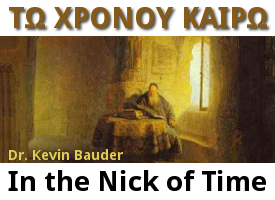People of God: Eternity
 Read the series so far.
Read the series so far.
As previous essays have shown, a biblical people is a nation, and a biblical nation is an ethnic unit. A people of God is a nation devoted to the worship of Jehovah. Until the constitution of Israel, no people of God existed anywhere. From the moment of its creation as a nation, however, Israel was called out from among the nations to be a chosen people, a peculiar treasure to the Lord, a kingdom of priests. Israel was the first, and for many centuries the only, people of God.
Nevertheless, even within the Old Testament, God revealed a purpose that extended to other peoples. Passages such as Psalm 67 and the miniature Psalm 117 made it clear that God wanted many nations to devote themselves to His worship. In what has to be a millennial reference, Isaiah 19:18-25 indicates that both Egypt and Assyria will someday join Israel, standing side-by-side as peoples of God. Every indication is that God always meant to have multiple peoples to call His own. And why not? If, in individual salvation, God displays the abundance of His grace by extending salvation to many (Rom. 5:15), then why, in national calling, should God’s exhibition of grace be restricted to one?
During the millennium, the pluriform grace of God will be exhibited through the calling of many peoples. Many nations will offer their worship to God through Israel’s messiah. While Israel will retain a unique position (Zech. 8:20-23), many peoples and mighty nations will come to seek Jehovah Tsabaoth and to entreat His favor.


Discussion